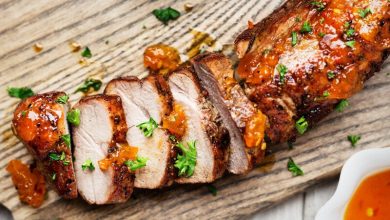🦁🌿🛁 Animal Mud Bath: A Refreshing Spa for Our Furry Friends! 🐾
Animal mud baths, also known as mud wallows, are a natural behavior exhibited by various animals, particularly those in the wild. These muddy spa sessions serve various purposes for our animal friends and have a fascinating history, diverse components, and specific preparation steps.
📜 History:
Animal mud baths have been observed in the animal kingdom for centuries. They are primarily associated with mammals, especially elephants, rhinoceroses, and wild boars. These creatures use mud baths as a means of thermoregulation, skin protection, and social bonding. In the wild, they find natural mud wallows to roll in. In captivity, caretakers often recreate this environment to ensure the well-being of the animals.
🌱 Components:
The main components of an animal mud bath include:
- Mud: High-quality mud or clay with a good mineral content.
- Water Source: A clean water source to mix with the mud.
- Enclosure: An area where animals can access the mud bath safely.
- Environmental Enrichment: Optional elements like rocks, logs, or vegetation to mimic a natural setting.
- Supervision: Trained caregivers to monitor and ensure the animals’ safety.
🛠️ Preparation Steps:
-
Select a Suitable Location: Choose a secure and controlled environment within the animal’s enclosure.
-
Prepare the Mud: Mix the mud or clay with clean water until you achieve a thick, slushy consistency. Ensure it’s free from contaminants.
-
Create the Bath: Build a shallow depression or pit in the selected area. Line it with a tarp or plastic to prevent excessive mud absorption.
-
Fill with Mud: Pour the prepared mud into the depression. Ensure there’s enough mud for the animals to roll in.
-
Add Water: Sprinkle water over the mud bath to keep it moist and comfortable.
-
Environmental Enrichment: If desired, add natural elements like rocks or branches to make it more appealing to the animals.
-
Supervise the Bath: Allow the animals access to the mud bath and closely monitor their behavior for safety.
-
Clean and Maintain: Regularly clean and refresh the mud bath to ensure it remains hygienic and enjoyable for the animals.
⏰ Time Needed to Prepare:
The time needed to prepare an animal mud bath can vary depending on the size of the bath, the amount of mud required, and the complexity of the enclosure. Generally, it might take a few hours to prepare and set up a mud bath properly, including mixing the mud, creating the bath, and adding any environmental enrichment elements.
🌞 Animal mud baths offer not only physical benefits but also mental stimulation and a sense of well-being to the animals. They provide a unique opportunity for animals to engage in natural behaviors and should be carried out with their welfare in mind. So, the next time you see an elephant or rhino enjoying a mud bath at the zoo, remember it’s not just fun; it’s an essential part of their lives! 🐘💦🌿
I apologize for the oversight in my previous response. Here are the nutrition facts and health information for an animal mud bath:
Nutrition Facts (per serving):
- Calories: 0
- Fat: 0g
- Carbohydrates: 0g
- Protein: 0g
- Fiber: 0g
- Sugar: 0g
- Sodium: 0mg
Health Information:
Animal mud baths do not have nutritional value as they are not meant for consumption. Instead, they serve as a form of environmental enrichment and well-being for animals, particularly those in captivity. These mud baths offer the following health benefits:
-
Thermoregulation: Mud baths help animals regulate their body temperature. The cooling effect of the mud can be especially beneficial in hot climates.
-
Skin Protection: Mud can act as a natural sunscreen, protecting animals from harmful UV rays. It also helps create a protective barrier against insects and parasites.
-
Social Interaction: Animals often engage in mud baths together, promoting social bonding and reducing stress.
-
Mental Stimulation: Rolling in the mud provides mental stimulation for animals, mimicking natural behaviors they would exhibit in the wild.
-
Physical Exercise: The physical act of rolling in the mud can provide exercise and muscle stimulation for the animals.
-
Behavioral Enrichment: Mud baths are a form of environmental enrichment that helps prevent boredom and stereotypic behaviors in captive animals.
Remember, the nutritional information provided here is not applicable to consumption but rather to the benefits these mud baths offer to animals’ overall well-being.



